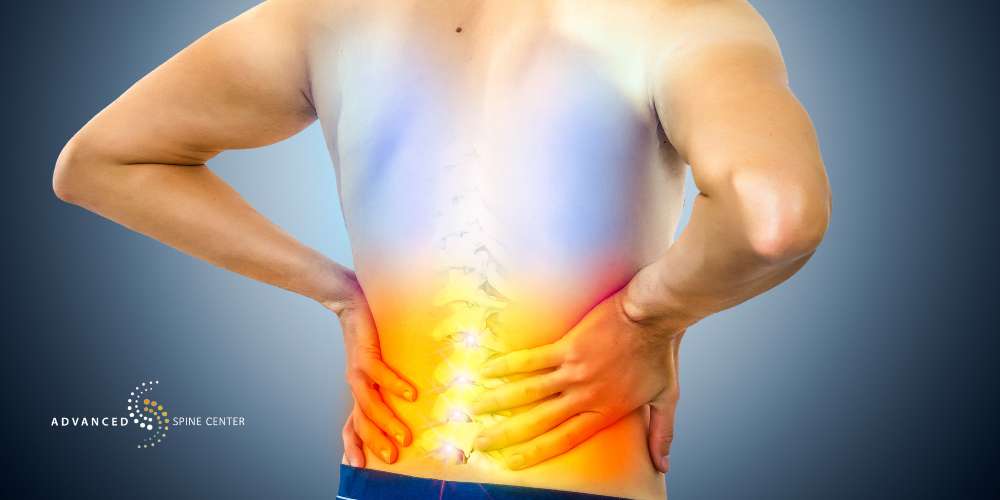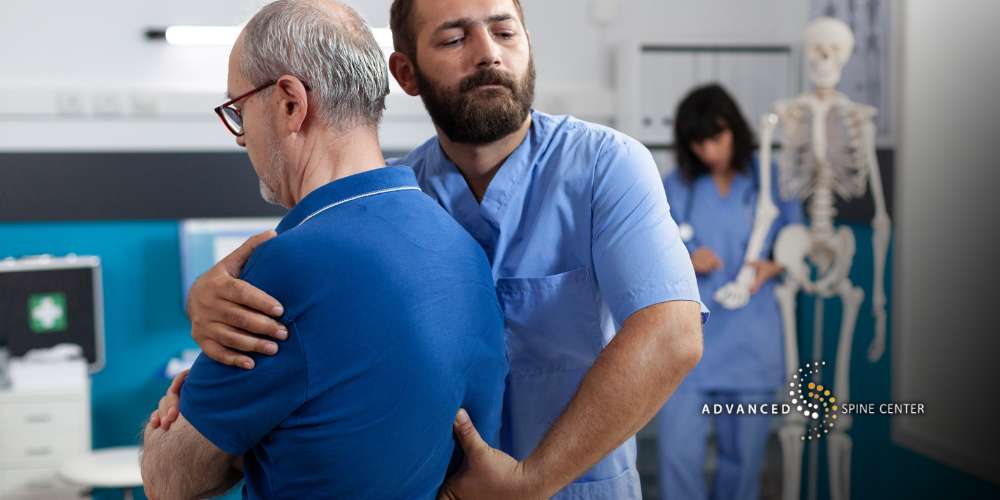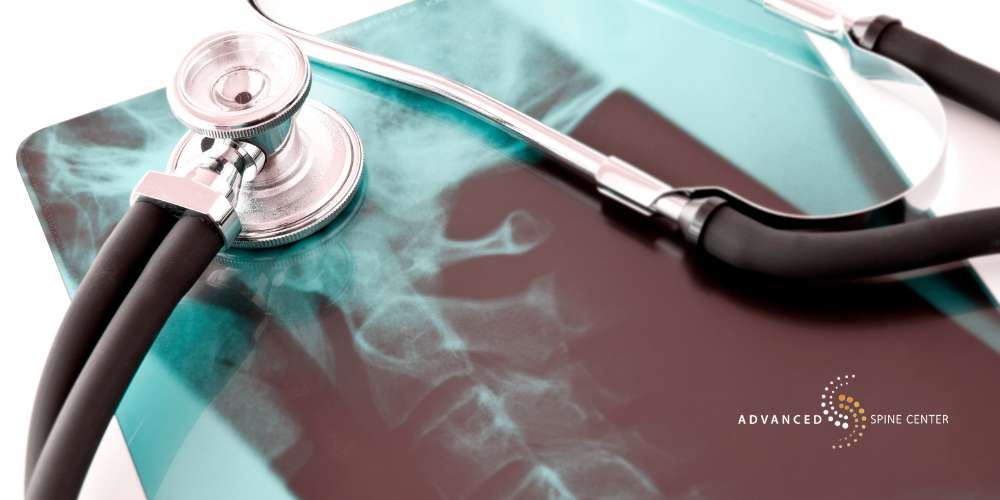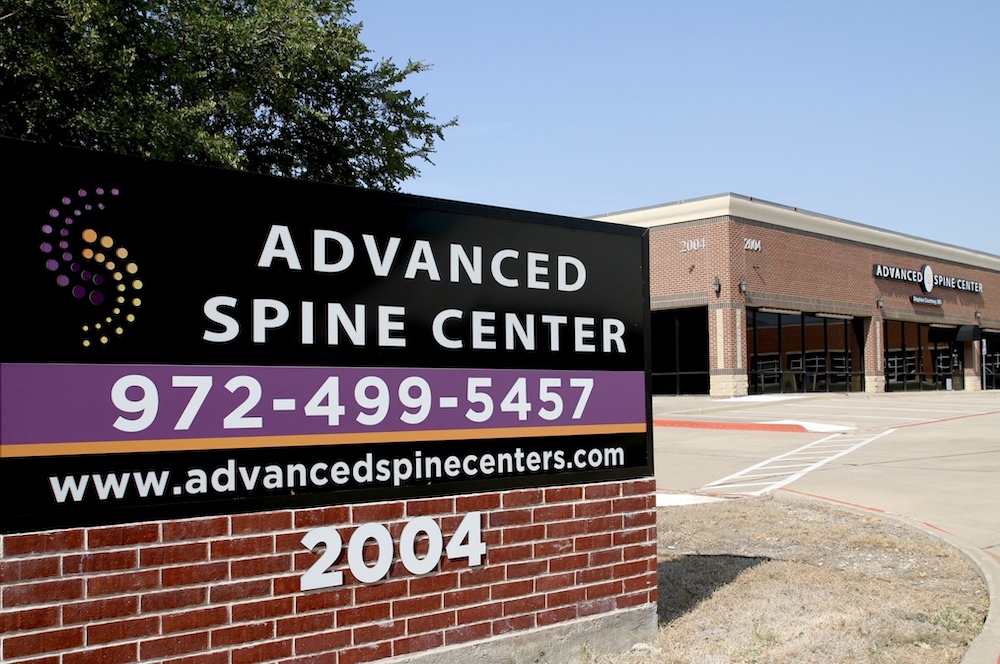Specialties

Bertolotti syndrome is a condition that often causes chronic low back pain, primarily stemming from the lumbar spine and sacroiliac joint. This condition occurs when a lumbosacral transitional vertebra (LSTV) develops, creating abnormal connections between the lower spine and pelvis. Patients with Bertolotti’s syndrome frequently experience ongoing discomfort that can disrupt their daily lives, making it essential to seek help from experienced pain physicians.
At the Advanced Spine Center in Plano, TX, our team specializes in diagnosing and treating chronic pain caused by Bertolotti syndrome. By addressing the unique challenges of this condition, we help patients regain mobility and improve their quality of life.
If you are struggling with persistent lower back pain, call us today at (972)-499-5457 to schedule an appointment and learn more about effective treatment options.
What Is Bertolotti Syndrome?
Bertolotti syndrome occurs when the fifth lumbar vertebra (L5) develops an abnormal connection to the sacrum or pelvis, known as a transitional vertebra. This connection typically involves an enlarged transverse process, which can cause mechanical stress and irritation in the lower back. While some cases remain asymptomatic, others result in chronic lower back pain, referred to as symptomatic lumbosacral transitional vertebrae.
Bertolotti’s syndrome often presents a diagnostic and management dilemma because its symptoms can mimic other spine-related issues, making it challenging to pinpoint the exact source of a patient’s pain.
Proper identification of the enlarged transverse process and its impact on the lumbar spine is crucial for creating an effective treatment plan. Early diagnosis and targeted care can significantly improve the quality of life of individuals experiencing persistent pain.
Bertolotti Syndrome vs Normal Spine
In a normal spine, the lumbar vertebrae and sacrum are separate, allowing for smooth movement and support. However, in patients with Bertolotti syndrome, an abnormal connection called a lumbosacral transitional vertebra (LSTV) forms between the lumbar spine and the sacrum. This often includes an enlarged transverse process, which can lead to sacroiliac pain, radicular pain, and mechanical stress.
Bertolotti’s syndrome can also contribute to a degenerative spine over time, particularly in young patients who experience chronic discomfort early in life. During a physical examination, this condition must be distinguished from other spinal issues through a careful differential diagnosis, as symptoms can mimic those of different causes of low back pain.
Understanding the presence of transitional vertebrae and their impact on the lumbar spine is essential for identifying Bertolotti syndrome and managing its effects.
Is Bertolotti Syndrome Serious?
Bertolotti’s syndrome can become a serious condition if left untreated, as it often leads to degenerative spine changes over time in the lumbar vertebrae. The presence of a transitional vertebra can cause abnormal stress on the surrounding structures, resulting in discogenic pain in the lower back and sacroiliac joint pain.
These issues can worsen without proper pain management, significantly impacting a patient’s mobility and quality of life. Identifying and addressing the lumbosacral transitional vertebra early is essential to prevent long-term complications and provide effective relief for those suffering from chronic discomfort.
Bertolotti Syndrome Symptoms

Bertolotti syndrome symptoms often include persistent low back pain, particularly in affected patients with transitional vertebrae. This chronic back pain can sometimes present as discogenic pain, stemming from stress on the spinal discs and surrounding structures.
Enlarged transverse processes associated with the transitional vertebrae are typically the source of discomfort, causing mechanical issues in the lower spine. Accurate diagnosis is essential for proper management of Bertolotti’s syndrome, as its symptoms can mimic other spinal conditions.
With the right approach, including targeted treatments, patients can find relief from their ongoing back pain.
What Causes Bertolotti Syndrome?
Bertolotti’s syndrome is caused by an abnormal development of the lowest lumbar vertebra, where an enlarged transverse process forms an unusual connection to the sacrum or pelvis. This structural irregularity, known as a lumbosacral transitional vertebra, alters the natural mechanics of the spine. As a result, it places added stress on nearby joints, discs, and soft tissues, disrupting normal movement and balance.
Over time, this abnormal connection can lead to disc degeneration, discogenic low back pain, and increased wear and tear on the surrounding spinal structures. The mechanical strain often causes chronic inflammation, stiffness, and discomfort, which are hallmark symptoms of Bertolotti’s syndrome.
For many individuals, the condition causes localized pain and may contribute to referred pain in the sacroiliac joint, hips, or legs, further impacting mobility and quality of life.
Early diagnosis and treatment are essential to address these issues before they progress and to provide long-term relief for those affected.
Is Bertolotti Syndrome Hereditary?
Bertolotti’s syndrome is not typically considered hereditary, but there is evidence suggesting that lumbosacral transitional vertebrae can have a genetic component in some families. While the exact cause remains unclear, understanding its clinical significance is essential, as the condition can lead to disc degeneration and chronic pain over time.
Even if the transitional vertebra itself is not inherited, individuals with a family history of spinal issues may be more prone to similar abnormalities. Proper management of Bertolotti’s syndrome focuses on alleviating pain and preventing further degeneration, helping patients maintain their mobility and quality of life.
When Should I Seek Treatment for Bertolotti’s Syndrome?
If you experience persistent pain that does not improve with rest or basic remedies, you should seek treatment for Bertolotti’s syndrome. A thorough clinical assessment is essential to identify the source of discomfort caused by the lumbosacral transitional vertebra and its enlarged transverse process.
Treatment options, such as interventional therapy and targeted steroid injections, can provide significant pain relief for affected patients. Visiting a specialized pain clinic can help improve clinical outcomes by offering tailored solutions to manage Bertolotti’s syndrome effectively. Early intervention is key to preventing long-term discomfort and restoring mobility.
Bertolotti’s Syndrome Treatment Options in Plano, TX

Several effective treatment options are available for patients with Bertolotti’s syndrome in Plano, TX, to help manage pain and improve quality of life. Physical therapy is often recommended to strengthen the surrounding muscles and reduce strain on the affected area.
A pain physician may also suggest steroid and anesthetic injections as part of injection therapy to provide targeted pain relief. For those requiring further intervention, advanced pain management techniques, including surgical treatment, may be considered to address the root cause of discomfort.
At the Advanced Spine Center, personalized care plans are designed to help patients with Bertolotti’s syndrome find lasting relief and restore mobility.
Bertolotti Syndrome Exercises in Physical Therapy
Physical therapy plays a key role in managing Bertolotti’s syndrome, especially for back pain in young individuals. Tailored exercises can help strengthen the muscles surrounding the spine, reducing stress on the transverse process and providing significant pain relief.
Physical therapy can often delay or eliminate the need for a surgical procedure by focusing on improving stability and mobility for patients with Bertolotti’s syndrome. A structured exercise plan under professional supervision can help alleviate discomfort and improve overall function.
Exercises to Avoid with Bertolotti Syndrome
While physical therapy can be beneficial, it is essential to avoid exercises that increase pain intensity or aggravate symptoms. For patients with Bertolotti’s syndrome, movements that place excessive strain on the lower back may worsen pain caused by the lumbo sacral transitional vertebra or sacroiliac pain.
High-impact exercises, heavy lifting, and extreme twisting motions should be avoided, as they can lead to further irritation. In severe cases, improper exercise could increase the likelihood of needing interventions like spinal fusion. Consulting a specialist ensures a safe approach to exercise tailored to Bertolotti’s syndrome.
Bertolotti Syndrome Surgery in Plano
For patients with Bertolotti’s syndrome who do not find sufficient pain relief through conservative treatments like physical therapy or a steroid injection, surgical intervention may be necessary. One common procedure is the surgical resection of the enlarged transverse process, which helps alleviate pressure on surrounding structures caused by the lumbosacral transitional vertebrae.
This targeted approach can significantly reduce chronic pain and improve mobility for individuals suffering from Bertolotti’s syndrome.
At the Advanced Spine Center in Plano, our specialists carefully assess each patient’s condition to determine if surgery is the best option for long-term pain relief.
Bertolotti Syndrome Surgery Recovery Time
Recovery time for patients with Bertolotti’s syndrome following surgical intervention varies depending on the extent of the procedure and individual healing factors. Typically, the resection of the transverse process allows for gradual improvement in mobility and pain reduction within several weeks.
Patients may receive steroid injections during recovery to manage residual discomfort and inflammation, ensuring a smoother healing process. Most patients with Bertolotti’s syndrome can resume light activities after a few weeks, with full recovery often taking a few months. A comprehensive post-surgery plan, including physical therapy, can further enhance recovery and restore quality of life.
Contact the Advanced Spine Center for Treatment of Bertolotti Syndrome in Plano, TX

If you are struggling with the pain and discomfort caused by Bertolotti’s syndrome, the Advanced Spine Center in Plano, TX, is here to help. Our experienced team offers personalized treatment options that could include a targeted steroid injection and comprehensive care plans to address your unique needs.
Don’t let chronic pain hold you back—contact the Advanced Spine Center today at (972)-499-5457 to schedule an appointment and take the first step toward lasting relief from Bertolotti’s syndrome.


